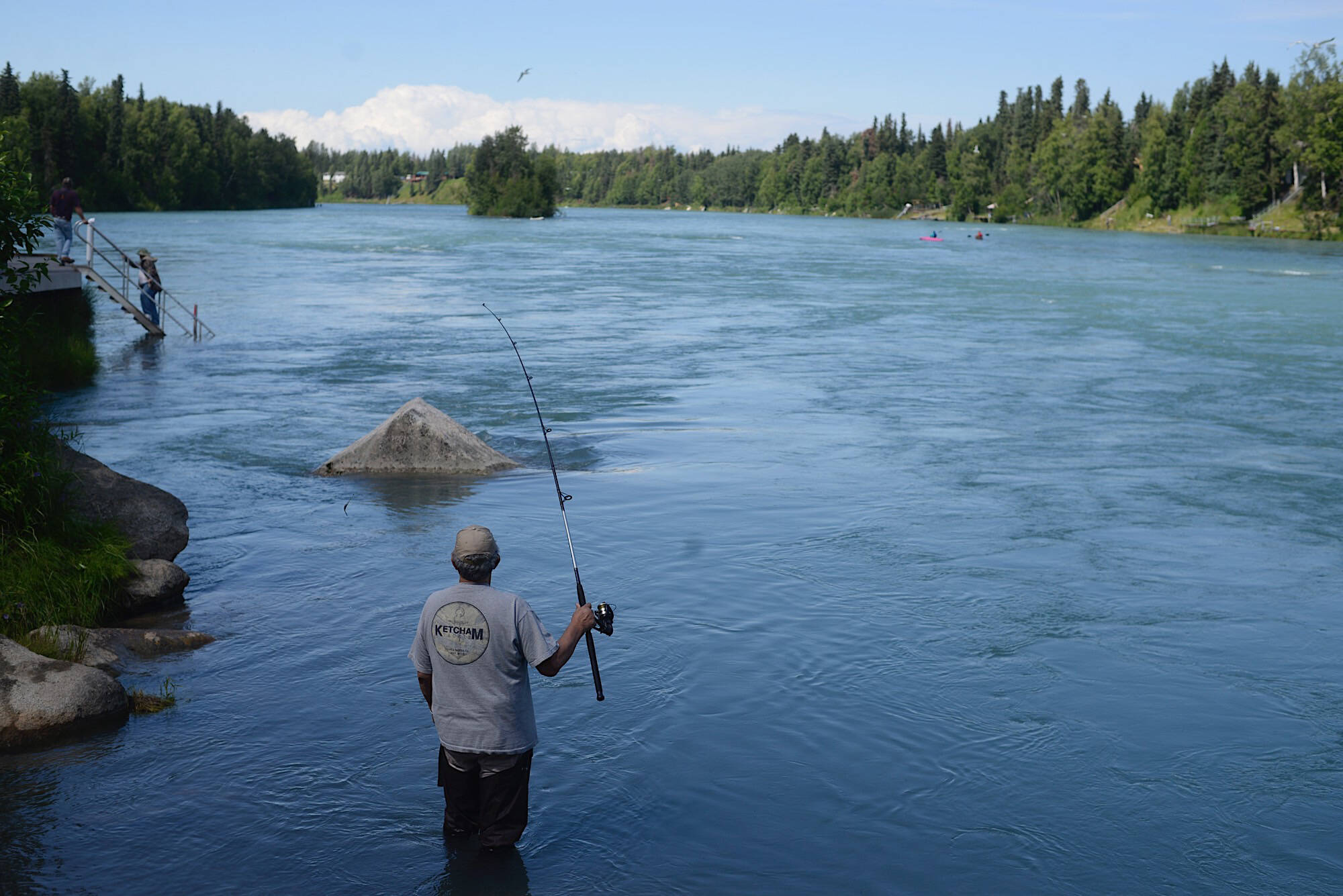The State Department of Fish and Game on Friday issued a series of emergency orders restricting and closing king salmon fisheries around the Kenai Peninsula and Cook Inlet.
Several of the emergency orders cite the newly adopted Kenai River Late-Run King Salmon Stock of Concern Management Plan, which the State Board of Fisheries adopted earlier this month and which directs the department to make closures and restrictions to local fisheries when preseason forecasts for early- and late-run king salmon fall below escapement goals.
Across seven emergency orders, the department issues a variety of closures and restrictions on local waters.
The Kenai River early- and late-run king salmon sport fisheries are closed entirely.
The Kasilof River early-run king salmon fishery and Ninilchik River king salmon fishery will be restricted to retention of only hatchery-produced king salmon that do not have an adipose fin.
Sport fishing for king salmon in Cook Inlet salt waters north of Bluff Point will be closed between May 1 and Aug. 15.
The bag limit for king salmon in Lower Cook Inlet waters will be reduced from two to one between May 1 and Aug. 15.
Anchor River and Deep Creek will be closed entirely to sport fishing between May 18 and July 15.
Several of the closures, including the complete preseason closures of the Kenai River king salmon fisheries, resemble moves made by the department last year in response to similarly low projections for king salmon runs.
Due to paired restrictions described in the action plan, the closures of Kenai River king salmon sport fisheries will also result in the closures of set gillnet commercial fisheries in the Upper Subdistrict, including the east side setnet fishery. Those fisheries were also closed entirely last year.
The preseason forecast for Kenai River late-run kings, one emergency order says, is 13,639. That projection falls below the board-set optimum escapement goal of 15,000-30,000 large king salmon, as well as the recovery goal described in the new action plan of 14,250 large kings.
The order says that this year’s forecast is slightly higher than the recent five-year average of 12,840 large kings. “If realized,” the order says the forecast would make for the third highest run in the last five years and the seventh lowest in the past 38.
“Cook Inlet king salmon stocks are experiencing a prolonged period of poor productivity,” Lower Cook Inlet Area Management Biologist Mike Booz said in one of the orders.
For updated information about fishing regulation and emergency orders, visit adfg.alaska.gov.
Reach reporter Jake Dye at jacob.dye@peninsulaclarion.com.

